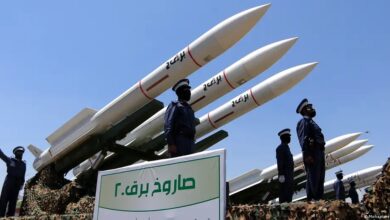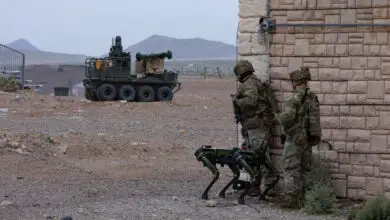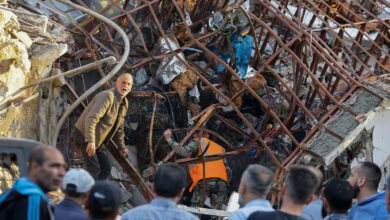Bahrain IEDs share components used by Yemen’s Houthi rebels, report says
Investigation finds IED parts found in Bahrain match those found on the Jihan 1 ship seized near Yemen in 2013
A new report by Conflict Armament Research found that improvised explosive devices recovered by security forces in Bahrain share some of the same Iran-made electronic components as those deployed in Yemen by the Houthi rebels.
CAR teams examined a variety of explosive devices and their components recovered by both Bahraini and Saudi security forces in recent years, including radio-controlled IEDs, directional fragmentation charges (DFCs), explosively-formed penetrators (EFPs) and victim-triggered passive infrared sensors (PIRs) for IEDs.
Bomb-making capabilities grew significantly in the predominantly-Shia Gulf country between 2012 and 2018, the report states, noting the recent appearance of domestically-made EFPs and DFCs.
The report, published Tuesday, December 17, finds that local bomb makers in Bahrain are skilled at assembling a variety of IEDs with many domestic parts, but concludes that they also often use radio-controlled IED circuitboards and pre-assembled “kits” imported from outside the country.
The report says that some of those electronic components originate from Iran, and match those used by Houthi rebels, as well as those found on the Jihan 1 cargo vessel seized off the coast of Yemen in 2013.
“A significant quantity of IED components documented by CAR in Bahrain, namely PIR sensors, radio-controlled IED components, and Woer-brand heat-shrink [wire] sleeving, are identical or similar to components that CAR has documented in Yemen, following their recovery from Houthi forces,” the report read.
“This suggests that actors in possession of the items in Yemen and Bahrain and the intended recipients of the Jihan 1 materiel share a similar supply line or knowledge transfer,” the report concludes with regard to PIR sensor assembly.
Manufacturer information and part numbers on several radio-controlled IED circuit board components were found to have been obscured deliberately by abrasion, a feature CAR investigators had also observed in Yemeni devices as well, but said is less common in places like Iraq or Syria.
Bahrain’s government has accused captured bomb-makers of having links to Iran’s Revolutionary Guard Corps and Hezbollah.
Captured in 2013 by the Yemeni government, the Jihan 1 was transporting military equipment of different types and origins, including Iranian manufactured ammunition and C-4 explosives, man-portable air-defense systems (MANPADS), PIR sensors, and nearly 2,000 electronic components used in the manufacture of radio-controlled IEDs.
Initial reports claimed the consignment was destined for al-Shabaab in Somalia, but Yemeni officials asserted it was intended for Houthi fighters. The United Nations Panel of Experts on Iran, which investigated the incident, concluded that Iran was “at the center of the Jihan operation.”
The United States also accuses the Iranian government of providing Yemen’s Houthi rebels with sophisticated missile and drone technology, which they have deployed against Saudi Arabia in retaliation for the kingdom’s leadership of a military coalition to defeat their rebellion in Yemen.
CAR concluded last year that landmines and IEDs mass-produced by Yemen’s Houthi rebels include Iranian components.
The London-based organization also examined two blocks of Iranian-made M112 plastic explosive recovered by Bahraini security forces during operations against Al-Ashtar Brigades, a local Shiite militant group and designated terrorist organization, and a Bahraini Hezbollah faction between 2017 and 2018.
While M112 blocks with the same lot number as those found on the Jihan 1 later turned up in Yemen, the lot numbers of the two M112 blocks recovered in Bahrain differ from those found aboard the Jihan 1 in 2013.
Nearly all of the IEDs recovered by local security forces were incomplete, suggesting bomb makers in Bahrain are aware of explosive material’s shelf-life and assemble bomb components in stages, possibly to avoid detection by security services, the report states.











